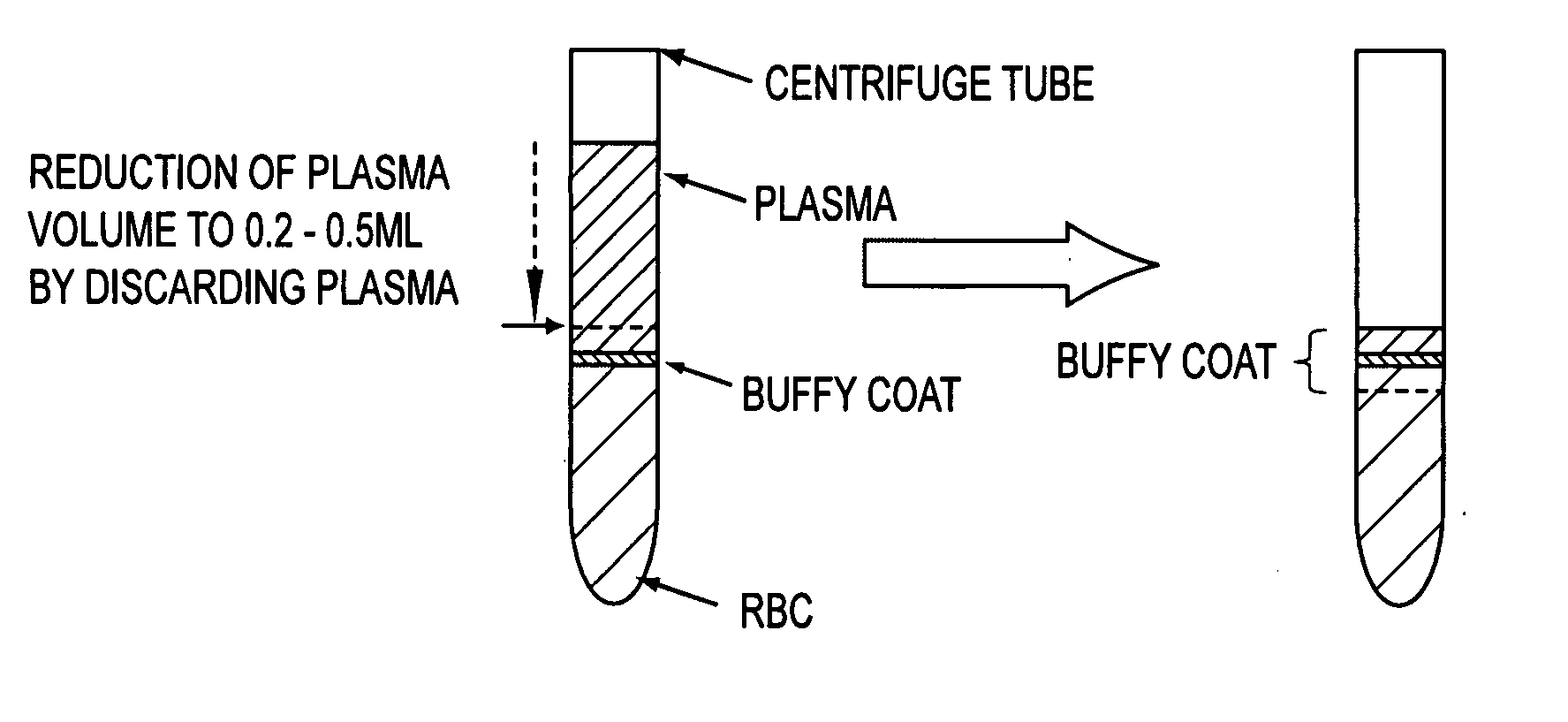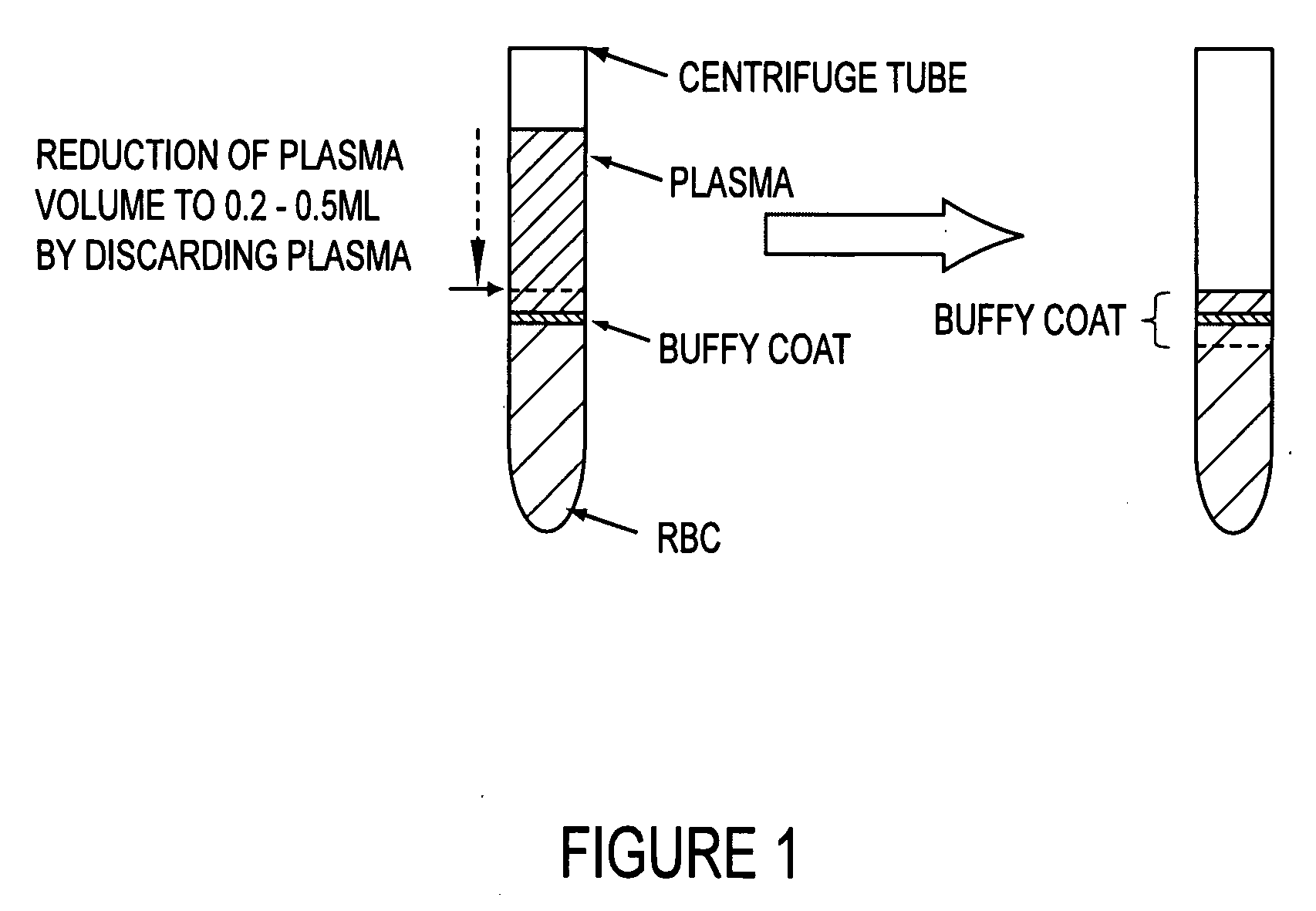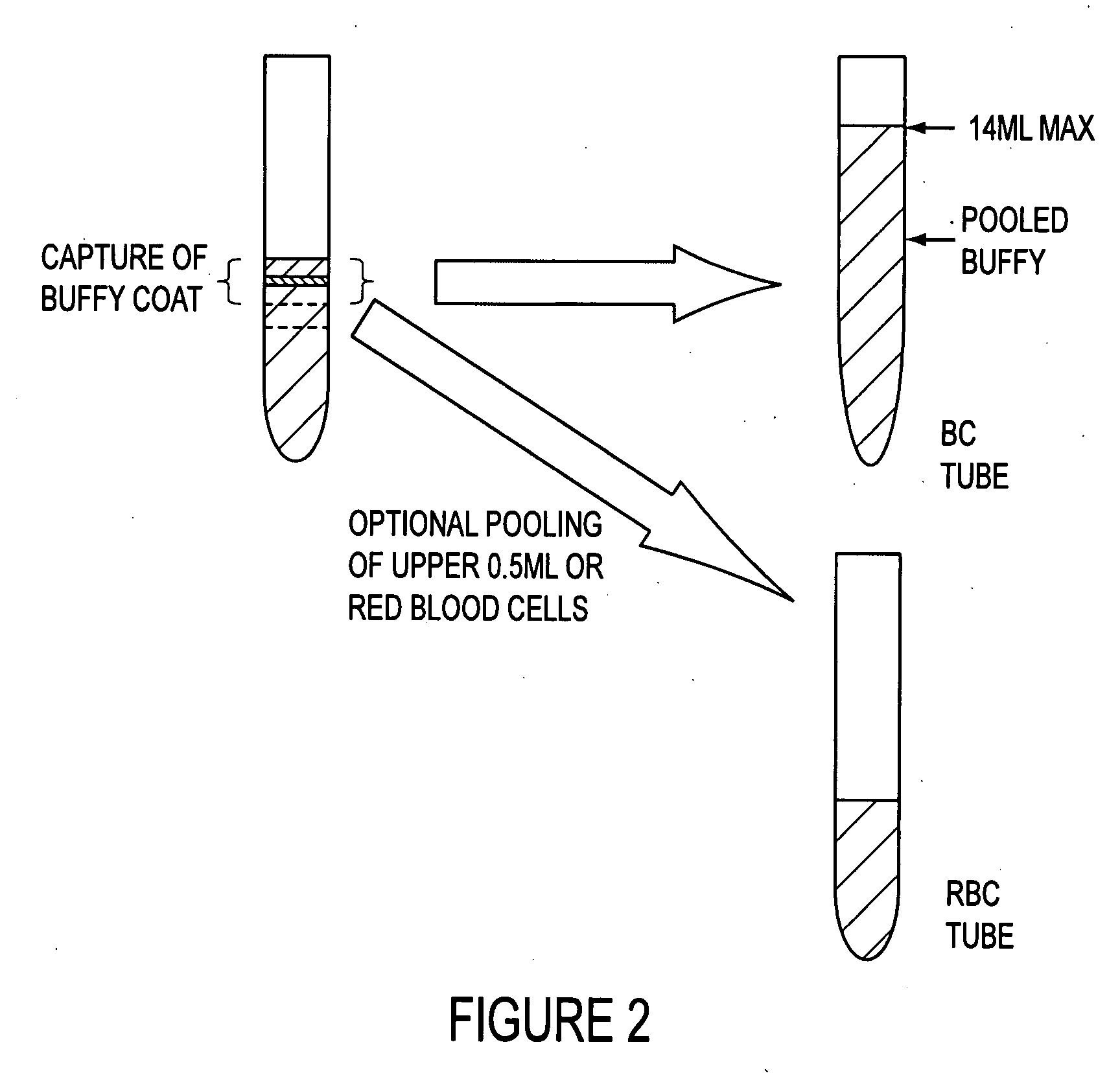Stem cells derived from bone marrow for tissue regeneration
- Summary
- Abstract
- Description
- Claims
- Application Information
AI Technical Summary
Benefits of technology
Problems solved by technology
Method used
Image
Examples
example 1
Buffy Coat Extraction
[0071] In this example is described the technique for separating and concentrating the bone marrow derived cells that are used for transplantation and tissue regeneration in accordance with the invention. The process must be carried out aseptically in a clean room environment with suitable bio confinement equipment well known in the art.
Definitions:BMBone MarrowBCBuffy CoatCPACryoprotective agentDMSODimethyl SulphoxideLFHLaminar Flow HoodLNLiquid nitrogenRBCRed Blood Cell
1. Transfer of BM from Collection Device to Centrifuge Tubes [0072] a) Take one bone marrow collection tube, check the lid is on tight and thoroughly mix the contents. [0073] b) Remove the small cap on the collection tubular connector and set aside on the sterile sheet. [0074] c) Invert the collection tube directly above one of the sterile centrifugation tubes and gently push the plunger, or insert and push the temporary plunger, in to displace the contents into the centrifuge tube. Excessiv...
example 2
Collection of Bone Marrow Cells
[0105] The following tools and apparatus were used: the collection spot was sterilized using a 1× sterile drape sheet with a hole of 75×90 cm, a sterile gauze pad 20×20 cm and a sterile solution to sterilize the collection spot such as Isobetadine. Local anesthesia was performed using a pull up needle 21G (green), a 1×5 ml. syringe and a subcutaneous-needle 23G (blue). The anesthetic was either 2% Scandicain® or 2% lidocain. The bone marrow aspiration was performed using a Sherwood Medical Sternum / Iliac aspiration needle 16G, Sarstedt Li-Heparin syringes with Luer connection and a small tray for transporting the syringes to the operating room.
[0106] The bone marrow was collected in a sanitized environment and the following steps were performed:
[0107] 1. The collection spot was chosen to be either left or right spina iliaca posterior (“SIPS”).
[0108] 2. The patient was put in appropriate position (in bed horizontal or sitting position).
[0109] 3. Ski...
example 3
Central Nervous System Regeneration
[0121] A total of 10 Spinal Cord Injury (SCI), 7 Cerebral Vascular Accident (CVA), 4
[0122] Multiple Sclerosis (MS) and 2 Amyotrophic Lateral Sclerosis (ALS) patients were treated with their own bone marrow derived stem cells. Stem cells were separated under clean room conditions and frozen until administration in accordance with example 1.
[0123] The cells were applied to the spinal cord or brain directly. CVA, MS and ALS patients were treated with intrathecal and intravenous (i.v.) administration. Both in patients with SCI and CVA significant improvements in sensation and movement were noted in the vast majority of the patients. Development of these functional recoveries took several months.
[0124] Also in MS and ALS patients significant improvements were made. All patients were stabilized and for the observation period no deteriorations were observed. The most striking observation is that the spasm disappeared in all Stroke and MS cases and in ...
PUM
 Login to View More
Login to View More Abstract
Description
Claims
Application Information
 Login to View More
Login to View More - R&D
- Intellectual Property
- Life Sciences
- Materials
- Tech Scout
- Unparalleled Data Quality
- Higher Quality Content
- 60% Fewer Hallucinations
Browse by: Latest US Patents, China's latest patents, Technical Efficacy Thesaurus, Application Domain, Technology Topic, Popular Technical Reports.
© 2025 PatSnap. All rights reserved.Legal|Privacy policy|Modern Slavery Act Transparency Statement|Sitemap|About US| Contact US: help@patsnap.com



